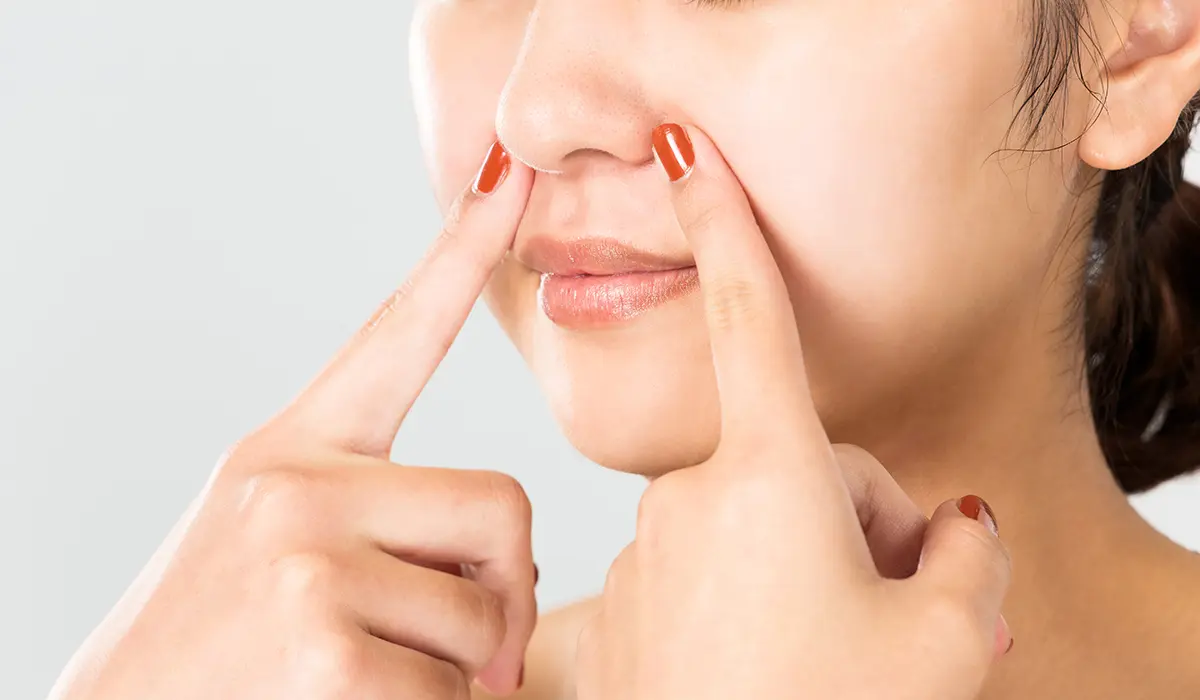Bunny lines may sound cute, but for many, these small wrinkles can be an unexpected sign of ageing—or overuse of facial muscles. You’ve likely noticed them as diagonal lines forming on either side of the nose, particularly when you scrunch your face in laughter or concentration. While they may seem subtle, bunny lines can be one of the first visible indicators of facial ageing or muscle imbalance. But what exactly causes them, and what can you do about them?
What Are Bunny Lines?
Bunny lines are fine wrinkles that appear on the upper sides of the nose, often extending towards the inner corners of the eyes. They become most visible when you crinkle your nose—think of the expression you make when you’re laughing, sniffing, or showing distaste.
While these lines are generally harmless, they can become deeper and more permanent with age or repetitive facial movements. For individuals who have had Botox treatments in other areas of the face (particularly the forehead or around the eyes), bunny lines can sometimes become more pronounced as the muscles in the upper nose area compensate.
The Anatomy Behind Bunny Lines
Understanding the anatomy behind bunny lines starts with knowing which facial muscles are involved. The key muscle at play is the nasalis muscle, a paired muscle that lies over the bridge of the nose. It’s primarily responsible for compressing the nasal cartilage, which helps us flare our nostrils or wrinkle our nose.
The nasalis muscle works in conjunction with other muscles of facial expression, including the levator labii superioris alaeque nasi and parts of the orbicularis oculi around the eyes. When these muscles contract repeatedly—especially in expressive individuals—they can create fine lines over time, just as repeated frowning creates forehead wrinkles.
Facial Expressions and Their Long-Term Impact
Our faces are incredibly expressive, capable of thousands of micro-expressions each day. While this expressiveness is essential for communication and emotional connection, it can also contribute to the formation of dynamic wrinkles—lines that appear during movement and later become permanent.
Bunny lines are considered dynamic wrinkles, meaning they initially form as part of normal muscle activity. However, as skin elasticity decreases with age and collagen production slows, these lines can become static wrinkles—present even when the face is at rest.
Interestingly, some people may notice bunny lines become more pronounced after receiving Botox in the forehead or crow’s feet areas. This happens because the muscles that usually dominate facial expressions are weakened, causing others, like the nasalis, to take over—leading to more noticeable wrinkles on the nose.
The Role of Ageing in Bunny Line Formation
Ageing plays a central role in the appearance of bunny lines. As we grow older, our skin naturally loses elasticity and firmness. This is largely due to a decrease in collagen and elastin production—two key proteins responsible for maintaining youthful, resilient skin.
Additionally, repeated muscle movement over the years causes the skin to crease and fold in the same places. If your nasalis muscle is particularly active, these creases can deepen into bunny lines. Even people who haven’t had Botox may notice these lines appearing as part of the natural ageing process.
Are Bunny Lines a Sign of Too Much Botox?
Bunny lines are sometimes referred to as “Botox-induced wrinkles.” When Botox is used frequently in the forehead or around the eyes (crow’s feet), it relaxes the muscles in those areas, which can shift facial movement toward other areas—such as the nose. This unintended compensation can make bunny lines appear more prominent.
The good news is that bunny lines can also be treated with Botox, albeit in much smaller doses. An experienced injector can balance facial muscle activity by placing precise Botox injections into the nasalis muscle to soften those lines without freezing your natural expressions.
Can You Prevent Bunny Lines?
While completely preventing bunny lines may not be realistic—especially for expressive individuals—there are ways to minimise their development and appearance:
- Skincare: Use products that support collagen production, such as retinoids, peptides, and vitamin C serums.
- Hydration: Keep your skin moisturised to maintain elasticity and smoothness.
- Sun Protection: Use SPF daily to prevent premature ageing caused by UV damage.
- Avoid Overuse of Botox: Over-treating certain facial areas can lead to unintended wrinkles in others.
- Facial Awareness: Try to be mindful of repetitive facial expressions, like crinkling your nose unnecessarily.
Treatment Options for Bunny Lines
For those looking to reduce the appearance of bunny lines, several options are available:
- Botox: A small amount injected into the nasalis muscle can relax the area and smooth lines.
- Dermal Fillers: In some cases, fillers can be used to support the skin and reduce fine lines.
- Microneedling or Laser Treatments: These can stimulate collagen production and improve skin texture.
- Topical Treatments: Consistent use of anti-ageing skincare products can gradually improve skin quality.
Always consult a qualified aesthetic practitioner to determine the best approach for your facial anatomy and goals.
They may be small, but they tell a bigger story about how our facial muscles, expressions, and age interact over time. Whether you’re seeking to understand them or find the right treatment option, knowledge is the first step toward feeling confident in your skin.
For more information on Nasalis Lines contact Eternal Youth Medical Aesthetics.

